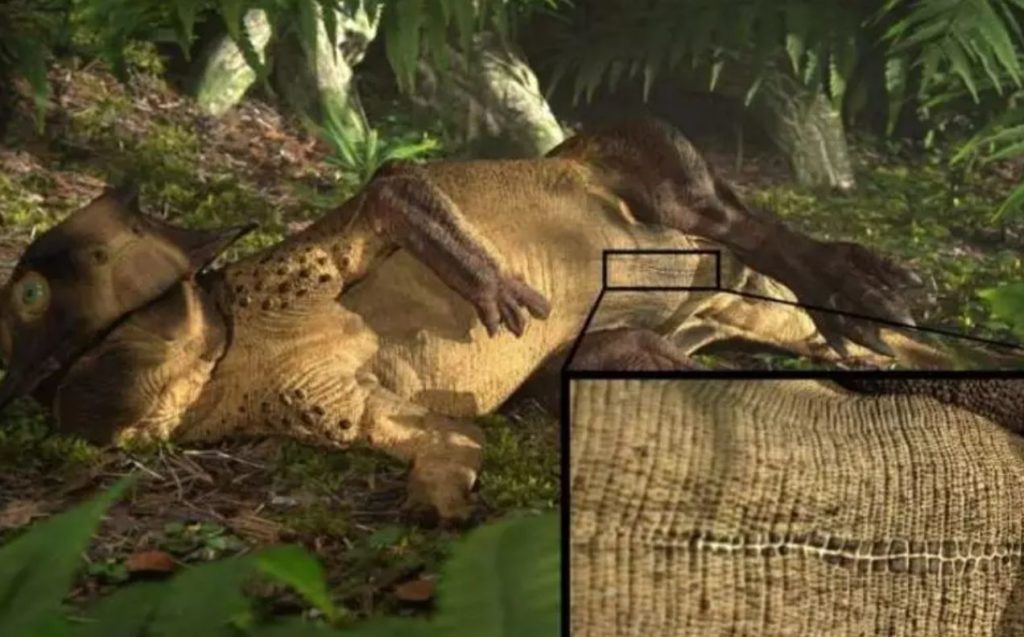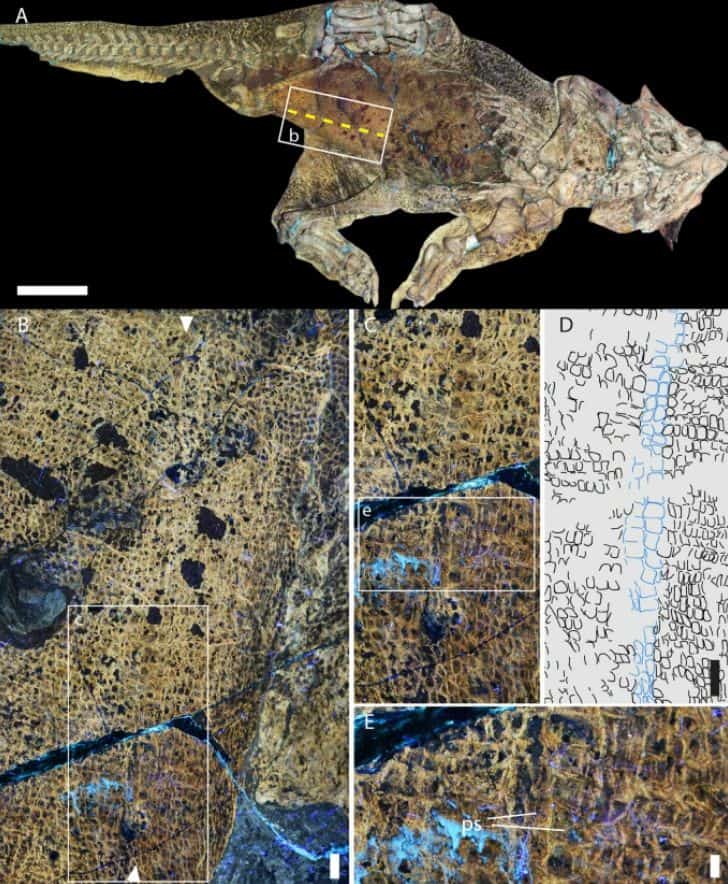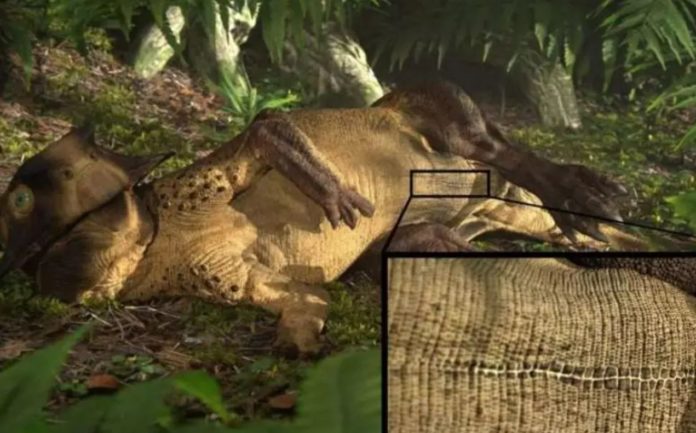Scientists from The Chinese University of Hong Kong (CUHK) and around the world used high-tech laser imaging to expose the fine details of a 125-million-year-old dinosaur fossil unearthed in China 20 years ago.
A 125-million-year-old dinosaur fossil discovered in China 20 years ago has been reported to have the oldest belly button ever found in reptiles and mammals by experts from The Chinese University of Hong Kong (CUHK) and around the world using high-tech laser imaging technology.
the Cretaceous plant-eating dinosaur Psittacosaurus, which was two meters long and walked on two legs and lived in China, was studied using the Laser-Stimulated Fluorescence (LSF) method by Dr. Michael Pittman, an Assistant Professor at the Chinese University of Hong Kong’s School of Life Sciences and one of the study’s co-corresponding authors.

According to Dr. Pittman, with the help of LSF imaging, they “identified distinctive scales that surrounded a long umbilical scar in the Psittacosaurus specimen, similar to certain living lizards and crocodiles.
“We call this kind of scar a belly button, and it is smaller in humans. This specimen is the first dinosaur fossil to preserve a belly button, which is due to its exceptional state of preservation.”
Dinosaurs, unlike humans, had no umbilical cord because they deposited eggs. Instead, like with other egg-laying land animals, the yolk sac of dinosaurs was linked to the body through a slit-like hole.
This is the entrance that closes about the time the animal hatches, leaving a long umbilical scar. Dinosaurs’ tendency to produce eggs predicts a long belly button scar, but this study is the first to provide fossil evidence to back up this notion.

“Whilst this beautiful specimen has been a sensation since it was described in 2002, we have been able to study it in a whole new light using novel laser fluorescence imaging, which reveals the scales in incredible detail,” Dr. Pittman remarked.
The study’s main and joint-corresponding author, Dr. Phil R. Bell of the University of New England in Armidale, Australia, said, “This Psittacosaurus specimen is probably the most important fossil we have for studying dinosaur skin. But it continues to yield surprises that we can bring to life with new technology like laser imaging.”
The specimen is on display in Frankfurt, Germany’s Senckenberg Museum.
Dr. Christophe Hendrickx of the Unidad Ejecutora Lillo in San Miguel de Tucumán, Argentina, and Mr. Thomas G. Kaye of the Foundation for Scientific Advancement in Arizona, United States, are also members of the research team.
The findings were reported in BMC Biology, an international magazine of biology.
Image Credit: Jagged Fang Designs
You were reading: Palaeontologists Report First Fossil Evidence Of Navel In Dinosaurs
